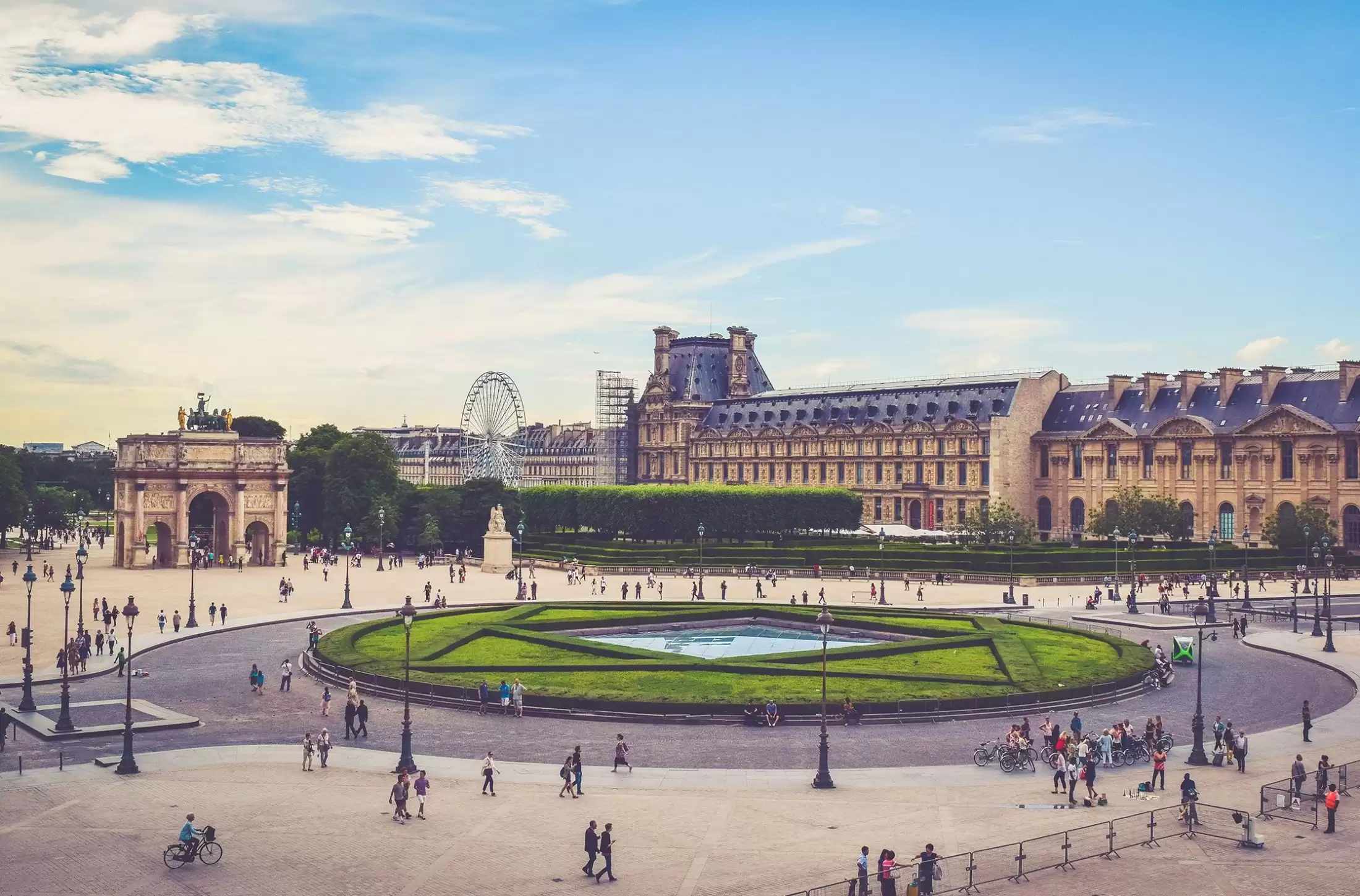Quais de Seine
The banks of the Seine, another stage of Parisian life, offer a bucolic place to stroll away from traffic. The facilities, designed for young and old alike, offer a walking route over 2 km long.

The banks of the Seine, another stage of Parisian life, offer a bucolic place to stroll away from traffic. The facilities, designed for young and old alike, offer a walking route over 2 km long.
The Palais Bourbon is the name commonly given to the building that houses the French National Assembly. It is a major parliamentary centre located in the 7th arrondissement of Paris on the Quai d'Orsay.
Created in 1772, the Place de la Concorde was initially known as one of the places of execution during the French Revolution. Louis XVI and Marie-Antoinette were guillotined here. Today it lies between the Tuileries gardens and the Avenue des Champ Elysées. It features the Luxor Obelisk, prestigious hotels (Hôtel de Crillon) and two fountains: Fontaine des Mers and Fontaine des Fleuves.
Located in the 7th arrondissement, it was built on the orders of Louis XIV to house the invalids from his armies.
Today it houses the Musée de l'Armée, the Musée des Plans-Reliefs and the Musée de l'Ordre de la Libération, as well as two churches: the Eglise du Dôme with the tomb of Napoleon I and the Eglise Saint-Louis des Invalides.
Just a stone's throw from the hotel, discover the Opéra national de Paris, a major heritage site in the 9th arrondissement. Founded more than three centuries ago by Louis XIV, it is a masterpiece of 19th-century theatrical architecture.
Its vocation is to be an academy of music, choreography and lyric poetry. Numerous shows are staged there every year.
The Sainte-Chapelle is a well-maintained Gothic jewel, built in the mid-13th century by Louis IX and now located on the Île de la Cité. Let yourself be dazzled by its exceptional stained glass windows and its 113 windows.
You can continue your visit at the Conciergerie, a splendid Gothic palace.
Located on the Île de la Cité in the heart of Paris, Notre Dame de Paris is one of the most emblematic monuments in Paris and France. A true masterpiece of Gothic architecture, it is a Catholic place of worship, the seat of the Archdiocese of Paris, dedicated to the Virgin Mary.
Located in the 7th arrondissement of Paris and a symbol of the French capital, the imposing "Iron Lady", a giant 324 metres high, was designed by Gustave Eiffel for the Universal Exhibition of 1889.
Today it towers over the famous Champs-de-Mars and the Trocadéro gardens. These are great places to admire the Eiffel Tower, but also to take a stroll.
Worth knowing: Every evening, as night falls, the Eiffel Tower is decked out in gold and sparkles for 5 minutes at the start of each hour until 1am.
Our hotel is proud to have obtained the prestigious La Clef Verte ecolabel, a certification awarded by an external, independent organization that distinguishes establishments committed to an exemplary environmental approach.
What is an ecolabel?
An ecolabel is an official certification awarded to establishments that meet strict criteria in terms of respect for the environment and sustainable development. It certifies that an establishment implements eco-responsible practices aimed at reducing its ecological impact while guaranteeing quality service. The internationally recognized La Clef Verte ecolabel is specifically designed for tourist accommodations and restaurants that adopt sustainable management of their resources.
Our commitment to sustainable tourism
To maintain this demanding certification every year, our hotel must comply with a rigorous set of criteria. We have implemented a number of concrete actions, such as Responsible water management, by measuring and reducing our consumption to limit waste;
Progressive elimination of single-use plastics, favoring sustainable alternatives such as biodegradable or reusable materials;
The fight against food waste, through better inventory management and increased awareness among our teams and customers;
Preserving biodiversity, by adopting local initiatives that respect the surrounding flora and fauna.